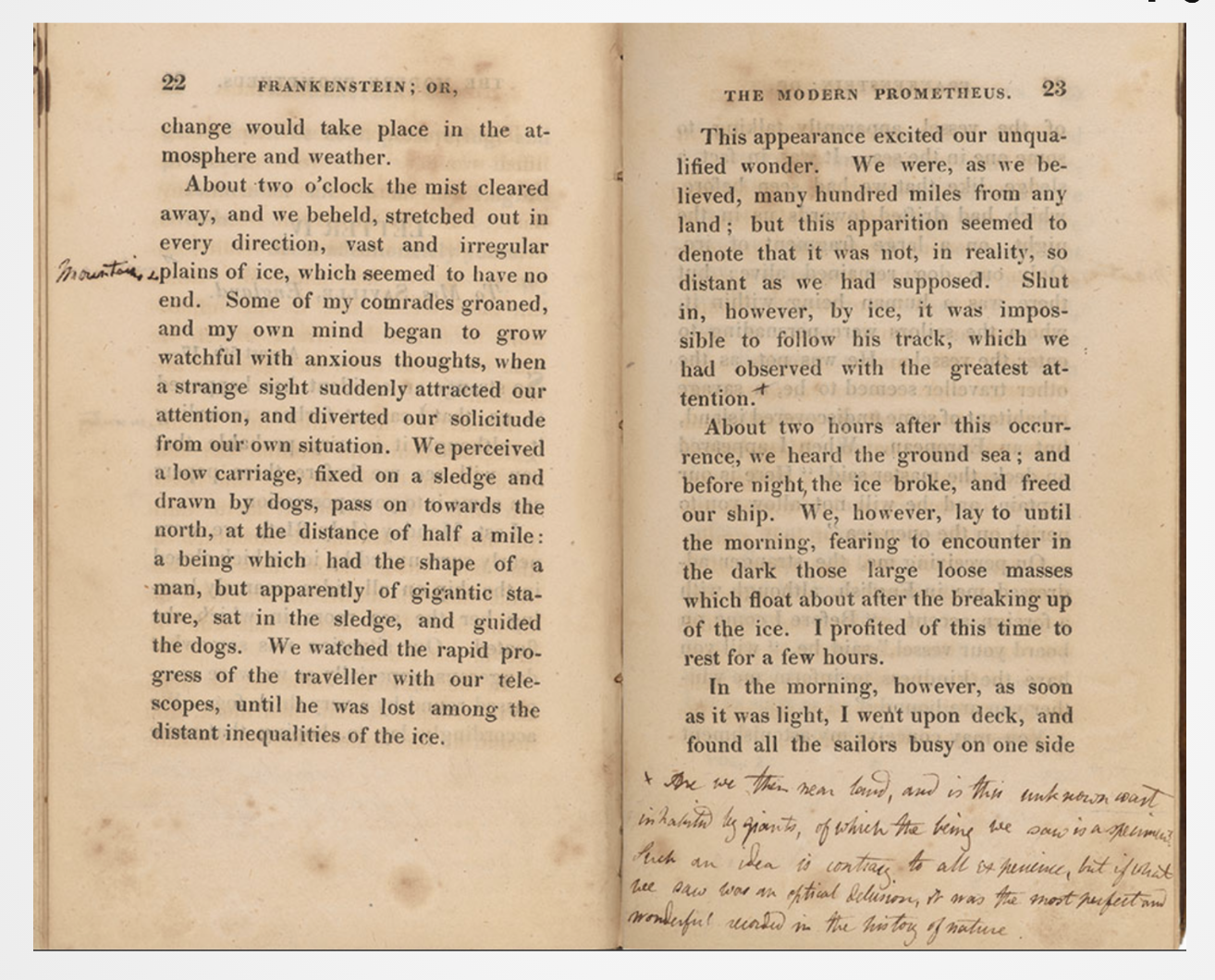 Last modified:
Friday, 30-Oct-2020 03:01:49 UTC. Powered by firebellies.
Last modified:
Friday, 30-Oct-2020 03:01:49 UTC. Powered by firebellies. Last modified:
Friday, 30-Oct-2020 03:01:49 UTC. Powered by firebellies.
Last modified:
Friday, 30-Oct-2020 03:01:49 UTC. Powered by firebellies.
This assignment involves you exploring an partially completed digital project and writing a review of what you are able to learn from it, and how you were able to navigate and explore it. This involves you in writing a review of your user experience of this evolving project site. You will be exploring The Frankenstein Variorum to read the first one-third of this novel and see how it changed over five different revisions produced in the author’s lifetime.
When you open the Variorum Viewer, it automatically loads the first fragment available of Mary Shelley's 1816 draft notebook, before it was ever published. Much of that notebook is missing, so this begins in the middle of a chapter. Here is a photo facsimile view of that very first page of the notebook from the The Shelley-Godwin Archive: you can see it is full of revisions!
In the Frankenstein Variorum viewer, the text and revisions on that page appear in way that helps you explore how it would be altered in later versions of the novel from its 1818 publication onward. You should begin by exploring that opening page in the Frankenstein Variorum Viewer to orient yourself to the reading experience. Get a sense of what is here and how the different versions of the novel are shown to compare with the variant passages (or the highlighted passages in grey).
Then, go to the top or bottom of the page and find the drop-down menu to Choose a Version
. Select a different version of the novel to read from the very beginning. (For each of the other versions, the very first section will automatically load. Begin reading the novel from here. Try choosing different versions, to view the novel from that perspective, and see how other versions relate to it.
The versions are organized in chronological order on the Choose a Version
menu, and each is given a color code. Where the colored dots appear near a grey passage, you are being shown that other versions of the novel have a different (variant) passage at this point. Click on the variant passage to read the variations at that point. See if you can find any interesting forks
.
Here is a brief chronology of the versions you are seeing:
forkin the road for the novel.
As you are reading the Frankenstein Variorum, try to explore each of the different versions as you are reading to see if you can identify some interesting revision moments for the novel as it changed in each stage. Only about one third of the novel is represented here because the project team has not yet completed work, so you will be able to read the beginning of the novel through just after Victor Frankenstein succeeds in bringing the Creature to life.
Take notes on your discoveries of interesting variants and on your user experience in navigating the site and reading the editions. Your task with this assignment is to write a review of your experience with the Frankenstein Variorium to post on one of the websites you developed for this class. Your review should feature:
To develop the content and write the review, collect screen captures as you are reading, and mindfully label and file these so you can find them again as you are writing. Use these as illustrations to help highlight interesting moments of variation as well as anything you'd like to address about the site navigation and reading experience on the site.
Try to feature more than just an early glimpse from the first portion of the novel in your review. Your review should comment on at least one of the sections that includes the 1816 manuscript notebook.
Post a link to your completed review on Canvas at the submission point for this assignment.